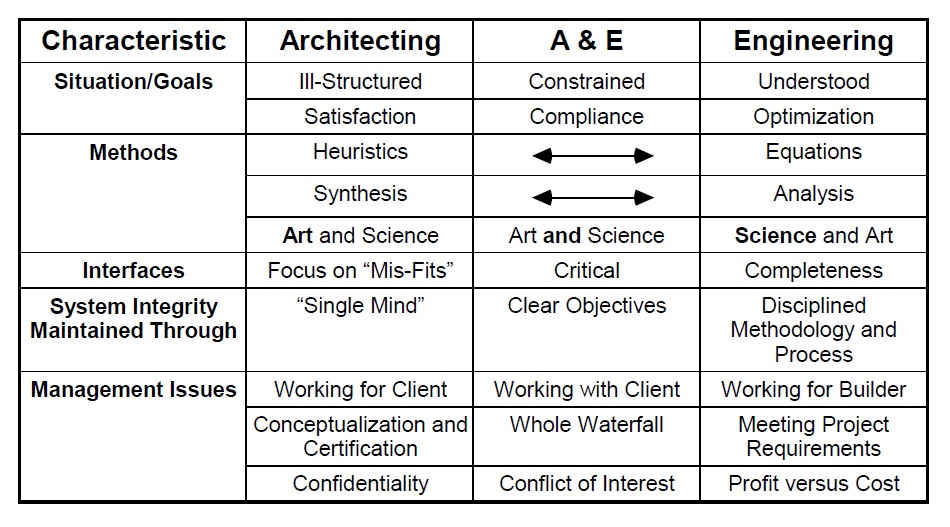One insight is worth a thousand analyses
-Engineering and Art: Iron Man 3
Systems Architecting is as much art as it is science. The best book on this subject is from Maier and Rechtin, and I highly recommend it.
-Maier and Rechtin, The Art of Systems Architecting, second edition, CRC Press, 2000
One of the best section of the book deals with using the method of Heuristics in architecting. Insight, or the ability to structure a complex situation in a way that greatly increases one’s understanding of it, is strongly guided by lessons learned from one’s own or others’ experiences and observations. Given enough lessons, their meaning can be codified into “heuristics”. Heuristics are an essential complement to analytics.
As in the previous post, where the system engineer is to consider the whole and apply wisdom, Maier and Rechtin also promote the use of wisdom but they note that “Wisdom does not come easy”
- Success comes from wisdom
- Wisdom comes from experience
- Experience comes from mistakes
While required mistakes can come from the profession as a whole, or from predecessors, it also highlights the importance of systems engineering education from those skilled in the art.
Examples of heuristics are:
- Don’t assume that the original statement of the problem is necessarily the best, or even the right one
- In partitioning, choose the elements so that they are as independent as possible; that is elements of low external complexity and high internal complexity
- Simplify. Simplify. Simplify.
- Build in and maintain options as long as possible in the design and implementation of complex systems. You will need them.
- In introducing technological and social change, how you do it is often more important than what you do
- If the politics don’t fly, the hardware never will.
- Four questions, the Four Whos, need to be answered as a selfconsistent set if a system is to succeed economically; namely, who benefits?, who pays? and, as appropriate, who loses?
- Relationships among the elements are what give systems their added value
- Sometimes it is necessary to expand the concept in order to simplify the problem.
- The greatest leverage in architecting is at the interfaces.
-taken from Maier and Rechtin, The Art of Systems Architecting, second edition, CRC Press, 2000
Heuristics are tools, and must be used with judgement. The ones presented in the book are trusted and time-tested. They may not apply specifically to your complex systems architecting work, though I think you will find most of them do.


